Computers are incredibly useful, however they are also complex beyond belief. This is made even more so because of the large number of confusing acronyms, words and terms. If you read tech blogs, or have friends/colleagues who are in-the-know, you have likely heard them mention overclocking and may have wondered what it is, and if you should be looking into it.
Here's a brief overview of overclocking.
Definition: Overclocking When it comes to most tech based devices, the processor (or CPU) is the integral component that functions as the brain of the device; it runs the show. The job of the CPU is to take instructions and input from all the other devices and components and execute them. For example, double-click on a program on your desktop and the CPU computes what to do with the mouse click (open the program), and runs the related code, which is shown as the program opening.
One thing many computer sales people talk about is processor or CPU speed. This is the number of instructions it can run in one second. These instructions are grouped together into one cycle, and one cycle per second equates to a Hertz. You may see computers that have 2Ghz processors, this means 2 Gigahertz or 2,000,000,000 cycles in one second.
Now, when manufacturers release a new CPU they design it to run at a standard, or optimal speed, and will generally limit it. This is done to preserve the life of the components, however there are often ways to break this speed limiter. When you raise the maximum clock speed, beyond the intended clock speed, you are overclocking it.
Why overclock? The main reason users overclock a processor is to make their computer or device run faster. By overclocking, programs will often run or open faster and the general operation will seem smoother. In other words, you can get more out of existing technology without paying to upgrade.
Are there any drawbacks? While overclocking will give you more power and speed, there are some serious drawbacks that make this option risky. The biggest being heat. As you probably have noticed, when you use some devices (say a laptop on your lap) for an extended period of time, they get warm. That's because the components of computers create heat, lots of heat. When you overclock, the processor works harder, thereby generating more heat.
Computers are designed to operate at certain temperatures and if this level is surpassed, the components can wear out more quickly or in extreme cases melt. This means that overclocking will cause your computer's parts to wear out quicker and will decrease the life of the device.
Should we overclock our devices? Did you know that you can overclock nearly anything with a processor? The most common are computers and new smartphones, especially Android devices. When you hear people talking about overclocking their device, they are almost always talking about personal devices.
While it's true, you will get a speed boost in the short run, overclocking will increase your IT budget in the future, because you will have to replace parts more often than is usual. Because most businesses tend to use their technology longer than personal users, any action that causes tech to wear out more quickly is not a good idea.
That being said, you can also do the opposite of overclocking. Underclocking is telling a computer's processor to run slower than it's designed speed. This will increase component life but decrease processing power, and could be beneficial for companies that have new computers and don't need intensive computing resources.
Before you take any actions however, it is best to talk to us, as we may have a better solution for you and one that will cost less.

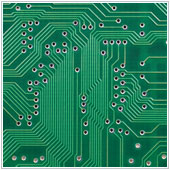 The computer is one of the most important inventions of the past century. While it is a magnificent machine, most users treat their computers like a black box. We know how to use it, but little do we know about what is inside. It's these components that allow us to communicate, run businesses and yes, even surf Facebook. As such, it could be beneficial to know a little bit about the internal workings of the modern computer.
The computer is one of the most important inventions of the past century. While it is a magnificent machine, most users treat their computers like a black box. We know how to use it, but little do we know about what is inside. It's these components that allow us to communicate, run businesses and yes, even surf Facebook. As such, it could be beneficial to know a little bit about the internal workings of the modern computer.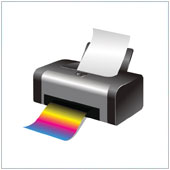 Printers are among the more important pieces of equipment businesses have. They are one of, if not the only, way to create hard copies of data stored on your computer. There are a nearly limitless number of printing jobs that can be done. As such, manufacturers have introduced a number of different types of printers, making it slightly confusing as to the difference between all the models available.
Printers are among the more important pieces of equipment businesses have. They are one of, if not the only, way to create hard copies of data stored on your computer. There are a nearly limitless number of printing jobs that can be done. As such, manufacturers have introduced a number of different types of printers, making it slightly confusing as to the difference between all the models available. One of the quintessential tools of the mobile warrior (the new-age road warrior) is the laptop. They are great for the mobile crowd and many businesses are even starting to use them in the office because they take up less space. Despite their comparatively high portability, they do have a bit of a rough side. Most laptops get hotter more quickly than a desktop, which can make them hard to use for extended periods. Luckily, there are a number of ways you can minimize the heat your laptop kicks out.
One of the quintessential tools of the mobile warrior (the new-age road warrior) is the laptop. They are great for the mobile crowd and many businesses are even starting to use them in the office because they take up less space. Despite their comparatively high portability, they do have a bit of a rough side. Most laptops get hotter more quickly than a desktop, which can make them hard to use for extended periods. Luckily, there are a number of ways you can minimize the heat your laptop kicks out. Business owners are usually most successful when they are moving forward. As such, it's always a good idea to look into the future and see what coming trends your business should be aware of. When it comes to tech you might want to take a look at what hardware trends we expect for the coming year.
Business owners are usually most successful when they are moving forward. As such, it's always a good idea to look into the future and see what coming trends your business should be aware of. When it comes to tech you might want to take a look at what hardware trends we expect for the coming year.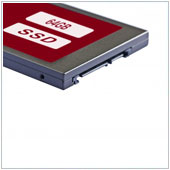 The hard disk drive (HDD) has been an essential part of computers more or less since their inception. While they have gotten smaller and increased in capacity, they are quickly reaching a point where they won't be able to go any faster, hold any more or last any longer. There is a replacement already making a splash with some great advantages, the solid-state drive (SSD).
The hard disk drive (HDD) has been an essential part of computers more or less since their inception. While they have gotten smaller and increased in capacity, they are quickly reaching a point where they won't be able to go any faster, hold any more or last any longer. There is a replacement already making a splash with some great advantages, the solid-state drive (SSD). Computers are wonderful machines, they have made our lives infinitely easier and it seems that nearly everything has a computer of some varying degree running it. Most company bosses expect their business computers to run at a speed that meets their needs. Over time, however, the speed at which they operate will decrease, meaning computers run slower. Why does this happen?
Computers are wonderful machines, they have made our lives infinitely easier and it seems that nearly everything has a computer of some varying degree running it. Most company bosses expect their business computers to run at a speed that meets their needs. Over time, however, the speed at which they operate will decrease, meaning computers run slower. Why does this happen?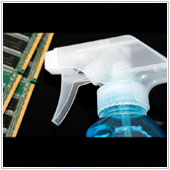 As children, many kids had the wonderful chore of washing mom and dad’s car in the summer. If your parents had a white car, you know that it was near impossible for it to look clean. White is a bad color for dirt, something many computer manufacturers don’t seem clued up on. The plus side to this is that it’s often obvious when it’s time to clean your computer, if you don’t do so on a regular basis already.
As children, many kids had the wonderful chore of washing mom and dad’s car in the summer. If your parents had a white car, you know that it was near impossible for it to look clean. White is a bad color for dirt, something many computer manufacturers don’t seem clued up on. The plus side to this is that it’s often obvious when it’s time to clean your computer, if you don’t do so on a regular basis already.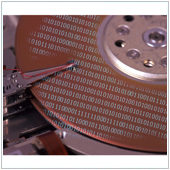 The hard drive is one of the components IT professionals look at when they’re buying a new computer, often worrying about things like read speed and storage space. Until a couple of years ago, there was only one type of internal hard drive available to computers, Hard Disk Drives (HDD). Now, manufacturers are starting to use a second kind, Solid-state Drives (SSD) and many customers are wondering which is better.
The hard drive is one of the components IT professionals look at when they’re buying a new computer, often worrying about things like read speed and storage space. Until a couple of years ago, there was only one type of internal hard drive available to computers, Hard Disk Drives (HDD). Now, manufacturers are starting to use a second kind, Solid-state Drives (SSD) and many customers are wondering which is better.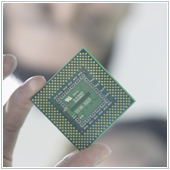 A few months ago Intel released the Ivy Bridge processor. Subsequently, computer manufacturers have been releasing computers with the processor and have been extolling the benefits of upgrading, along with some new features like Turbo Boost. These terms can be confusing and could trick you into unnecessary upgrades.
A few months ago Intel released the Ivy Bridge processor. Subsequently, computer manufacturers have been releasing computers with the processor and have been extolling the benefits of upgrading, along with some new features like Turbo Boost. These terms can be confusing and could trick you into unnecessary upgrades.
